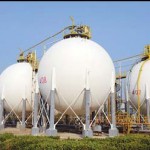Analysts turned most bearish on corn since November 2010 after The U.S. Department of Agriculture reported last Friday that 97.4 million acres of land was sown to corn, the highest since 1936. U.S. corn output is expected to be 30% higher than last year’s crop and total 14.005 billion. Global production is also projected to be higher in the 2013-2014 season, standing at 946 million metric tons, compared to 854.5 million last year.
According to a survey by Bloomberg, fifteen out of 25 analysts expect prices to fall next week, while six were bullish and four were neutral. This comes after weather conditions for crop developing improved for a third week through the end of June, boosting quality.
In its weekly report on Monday, the U.S. Department of Agriculture said that this year’s corn crop condition is a lot better than last year’s. As of June 30, only 8% of the crop was of “Very poor” and “Poor” quality, 25% was “Fair” and 67% had “Good” and “Excellent” qualities. Last year, 22% of the crop was categorized as “Very poor” and “Poor”, 30% was “Fair” and the remaining 48% fell in the “Good” and “Excellent” categories.
Dale Durchholz, a senior market adviser at Agrivisor LLC in Bloomington, Illinois, said for Bloomberg: “Weather is generally good for the crops. The USDA’s projections for production and acreage are still a drag on the market.”
The grain fell 4.43% on Friday following USDAs acreage report, marking a major 17.26% decline last week. Corn settled 0.07% lower on Wednesday, extending this weeks losses to 2.5%. The grain has lost 28% so far this year and is the second worst performer after silver in the Standard & Poor’s GSCI gauge of 24 commodities. Higher output is expected in the European Union as well as the European Commission said yesterday projected corn production stands at 70.02 million tons, 17% higher than the previous season. Ukraine and other former Soviet Union countries also expect a higher output.
Bearish on wheat
Wheat traders remained bearish for a fifth week. The International Grains Council said that global wheat production may rise 4.2% compared to a year earlier and total 683.1 million tons, 1 million more than the previous estimate. Wheat settled 1.5% higher on Wednesday, snapping an 8-day falling streak. Wheat is marking a 1.4% weekly advance after plunging 5.87% last week. In its acreage report on Friday, the U.S. Department of Agriculture said that the planted area for 2013 will equal 56.5 million acres, 1% higher than last year. The 2013 winter wheat planted area equals 42.7 million acres, 3% above last year and up 2% from the previous estimate.
In its crop progress report on Monday, the USDA said that as of June 30 43% of the winter wheat crop was planted, above the preceding week’s 20%. This was however below last year’s 73% during the comparable week and also below the five-year average 52%.
As for the spring wheat crop, the USDA reported that 93% has emerged as of June 30, compared to 90% during the prior week. This was below last year’s full emergence and the five-year average of 99%.
Soybeans expected to fall as well
Bloombergs survey showed an overall bearish soybean sentiment as well. Thirteen analysts bet on falling prices, while ten were bullish and one was neutral. The USDA said in its report on Friday that the soybean planted area is estimated at a record high of 77.7 million acres, up 1% compared to last year. Area for harvest, at 76.9 million acres, is up 1 percent from 2012 and will also be a record high, if realized.
As for the soybean crop condition, it is overall better than last season. As of June 30, 7% was categorized as “Very poor” and “Poor”, 26% was “Fair” and 67% was “Good” and “Excellent”. Last year, 22% of the crop fell in the “Very poor” and “Poor” categories, 33% in “Fair” and 45% was of “Good” and “Excellent” quality.
Meanwhile, concern over demand arose from the oilseeds biggest consumer, China. All of the countrys PMI readings for June showed declining readings compared to May. According to a 21st Century Business Herald report from yesterday, it may be difficult for China to realize a 7.5% GDP growth this year. This was in track with Goldman Sachss own downward revision of the Asian nations GDP forecast last week. Chinas economy is expected to expand by 7.4% in 2013, down from 7.8% and 7.7% in 2014, down from 8.4%.
Chinas wheat, corn and rice imports expected to rise
Meanwhile, rice, corn and wheat imports in the Asian country are expected to rise due to lower prices, despite an increase in domestic production.
Li Qiang, chairman of Shanghai JC Intelligence Co. said for Bloomberg: “Imported grains are cheap and some local crops like wheat, which has had issues with quality, are struggling to compete. It’s conceivable we’ll get a record in combined imports of all grains this year.” He also said rising labor costs and policies to boost domestic production prices have made Chinese production less competitive.
According to the USDA, China will purchase 4 million metric tons of wheat in the year that began June 1 and corn imports will surge by 67%.





